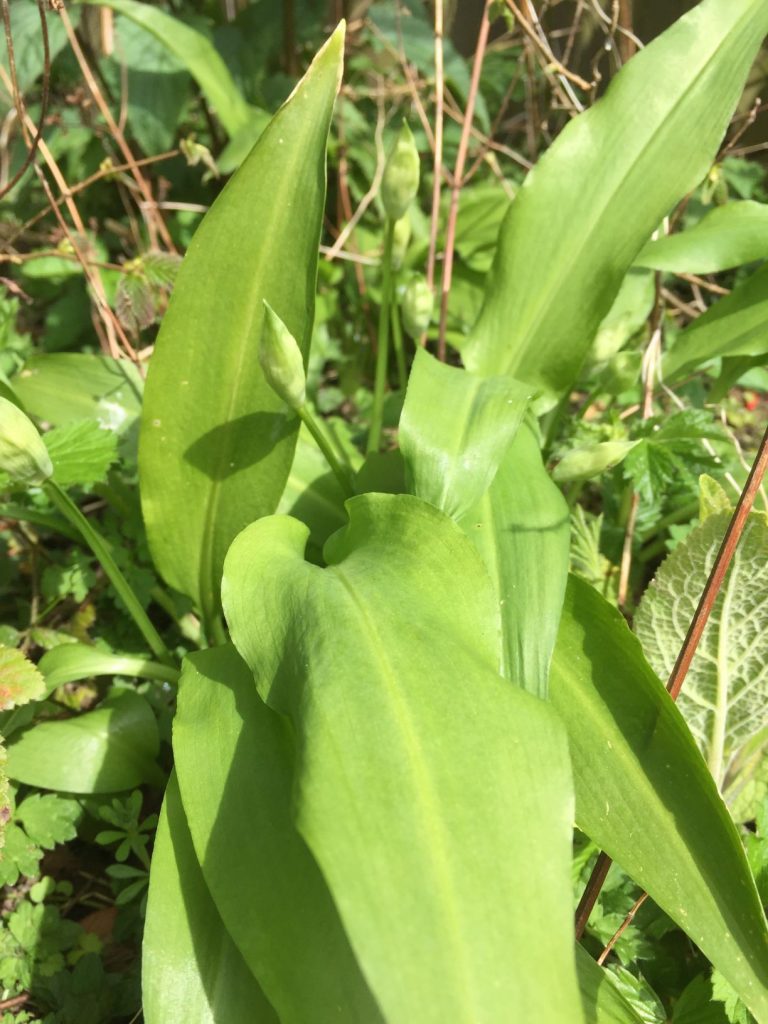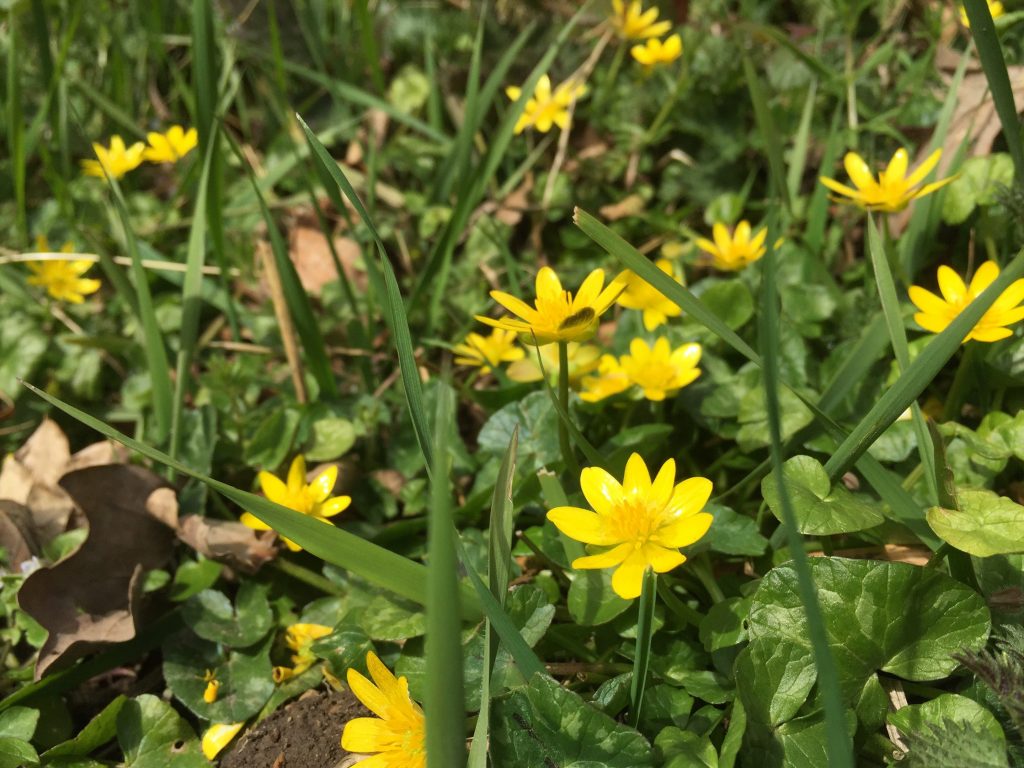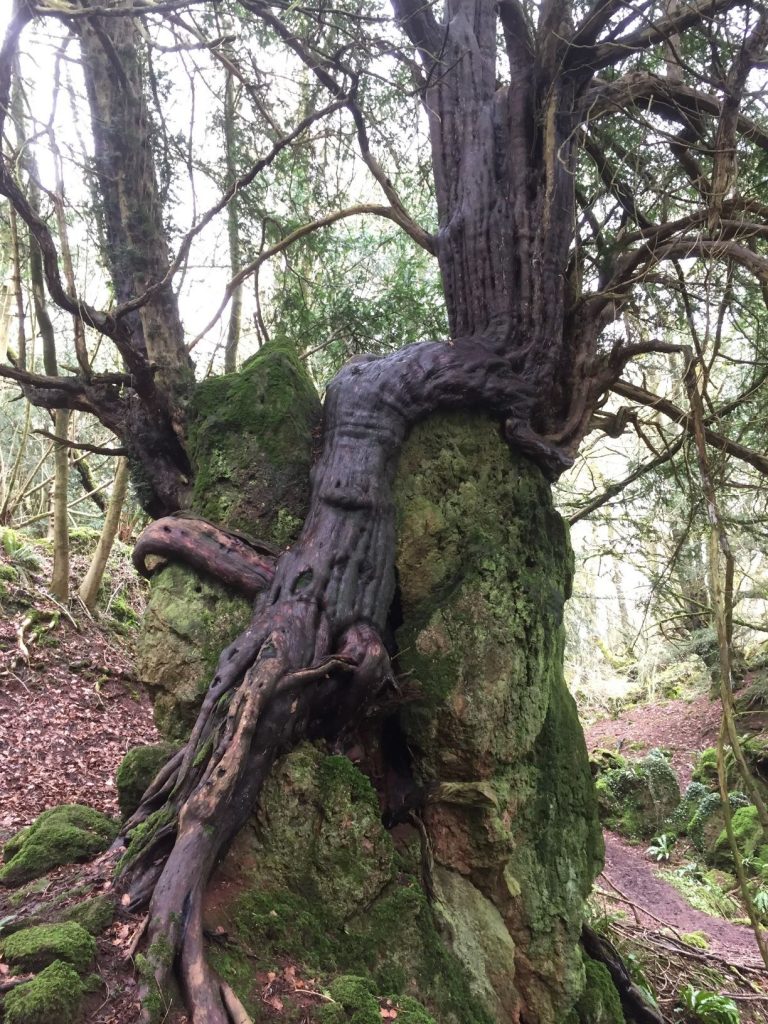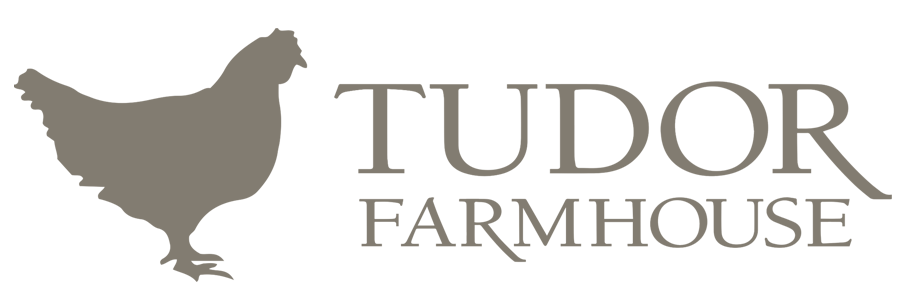All around us there are signs of spring and here at the Tudor Farmhouse we are surrounded by countryside, the Wye Valley and the Forest of Dean. Our own south-facing slopes, where we have a small number of sheep and horses, summer wildflowers are beginning to grow through. Ed Drewitt, our resident naturalist and wild forager, gives us some insights on what to look out for on these sunny, spring days:

Wherever you are in the country spring is emerging, although in the north of the UK, spring might be up to a month or more later than in the south. Close to the Tudor Farmhouse, the woodlands are full of wild garlic which has been emerging over the past month or so, covering the woodland floor amongst the scowles, a local name for the texture limestone landscape that has been left behind after ancient shallow workings for iron ore. Some even date back to the Roman period.

While snowdrop flowers have finished, their leaves are now long and bunched, taking in as much of the sun’s energy to replenish their underground bulbs before the woodland canopy leafs over. Roadside verges, woodland edges and fields are also covered in the bright yellow lesser celandine, an early flower that is adapt at closing up its petals as soon as the sun goes in. Dandelions are just coming into their best too and are an important early food for a huge variety of solitary bees, bumblebees, hoverflies and other insects at this time of the year. They are worth allowing to flower for the insects and if you can bear the seeds, they provide important April nourishment for goldfinches, greenfinches and bullfinches when other winter foods are running out and summer foods haven’t yet grown. If you live in the middle of a town or city look out for other early flowers, the tiny hairy bittercress that grow along the edge of paving stones and tastes like cress, herb robert, a type of Geranium that develops red leaves as we move into summer. Along the edge of parks stinging nettles, great caterpillar habitat for small tortoiseshell and peacock butterflies are just emerging alongside cow parsley, a plant that produces umbrella like flower heads and is loved by a whole manner of insects. Back at the Tudor Farmhouse, the trees are beginning to flower including the sallow tree or goat willow which produces bright yellow catkins, again providing important food for early emerging insects. With the sunshine and flowers come the butterflies and now is an ideal time to spot them as they emerge from hibernation in a shed or garage. Newly hatched butterflies such as orange-tip butterflies will also be flying soon, with females seeking garlic mustard (Jack-by-the-hedge) or cuckoo flower (lady’s smock) to lay their eggs. Wherever you are this spring there are definitely signs of nature to watch out for. And once the Tudor Farmhouse reopens later this year, there will be plenty of sweet fruits and berries to taste and devour!

